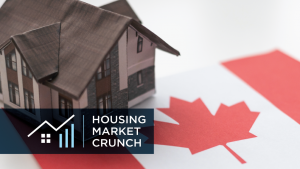Congestion Solutions, a new report released by the Canadian Automobile Association (CAA), identifies ways to ease congestion and gridlock on roads and highways and recommends focusing infrastructure dollars on improving Canada’s worst bottlenecks.
The report is a follow-up to Grinding to a Halt, Evaluating Canada’s Worst Bottlenecks, released in 2017, which showed Canada’s worst bottlenecks increase commute times by as much as 50 per cent and cost hundreds of millions of dollars in wasted time and productivity as well as burn an extra 287 million litres of fuel per year, explained Teresa Di Felice, assistant vice-president of government and community relations with CAA Club Group.
The CAA commissioned CPCS, a Canadian-based international transportation consulting firm, to put the report together.
“There are some significant issues with certain parts of our highway infrastructure and roads in really congested cities. So when we talk about investing infrastructure dollars on those bottlenecks, it’s really looking at solutions that exist today,” said Di Felice.
“What we found when we released the study in 2017 was there is a lot of questions around how do we fix it, what are some of the solutions. There are some very simple, quick fixes that have been done in other places that show with just a little bit of investment, you can have an impact on improving congestion.”
The report found on a global scale, Canada performs only in the middle of the pack in acting to reduce congestion. It identifies three recommendations for action that governments, the private sector and the public can do to help relieve traffic congestion.
Focusing infrastructure dollars on the worst bottlenecks across Canada was among the recommendations with Toronto, Vancouver and Montreal topping the list. Urban congestion can be combatted through investments in ride-sharing, carpooling, bike sharing and bicycle infrastructure, the report indicates.
“There are a number of people who probably would pop out of their cars and cycle if they felt it was safe to do so. That’s why we’re seeing such a focus on cycling infrastructure to help alleviate congestion,” said Di Felice.
“While people get a little concerned that you are taking up road space, at the same time you are taking cars out of the regular system. It’s a balancing out of how you use the infrastructure.”
Building new outlets such as cycling infrastructure and expanding or building new roads and highways can also help reduce congestion across the country, Di Felice said.
“We’re always worried that when it comes to transportation they say build it and they will come. People think if you build more road space you’re just going to fill it with more cars,” she noted.
“Another aspect of that is sometimes it warrants it and so we can’t be afraid to build it where it makes sense to build. It’s a lot more money that’s involved when you have to build new infrastructure. These are the types of things you need the data, you need to do the cost benefit analysis, you need to know that there are other jurisdictions that have done this and have seen reductions in congestion and traffic flow issues and how people get around.”
Taking existing roadways and making them work better is referred to as “low hanging fruit” in the report.
According to Di Felice, this would have the biggest impact with the lowest cost and includes tools and technology such as timing traffic lights, better managing the response to breakdowns and collisions, implementing speed limits that adjust to traffic flow and regulating the volume of traffic entering highways, using strategies such as ramp metering.
“It’s not something that is widely used in Ontario but it is very much used in other jurisdictions,” said Di Felice. “This involves the construction industry because you need to build and improve on the infrastructure. If you don’t have ramp metering in place or you don’t have the appropriate ramp in the best location to have good optimal flow onto the highways, those obviously need to be built. There is some cost involved but it is really low in comparison to building more lanes where you don’t have space.”
Another recommendation is better information and data so policy-makers at all levels of government can make better decisions. Di Felice said little public information is available in Canada on solutions to address urban congestion and more data needs to be collected and stored “so it can be effectively used to make the right decisions for the right reasons with the best benefit for the cost.”











Recent Comments
comments for this post are closed